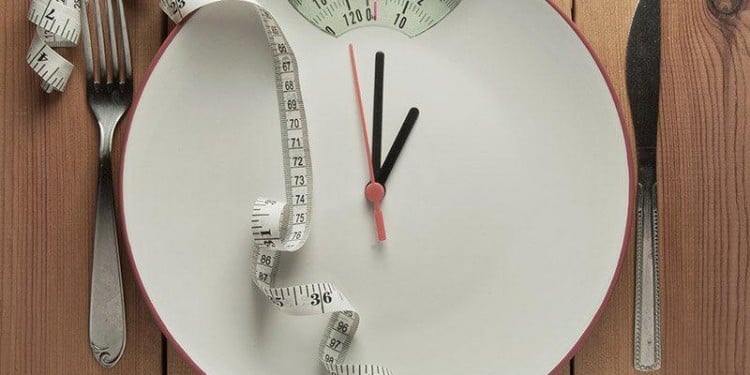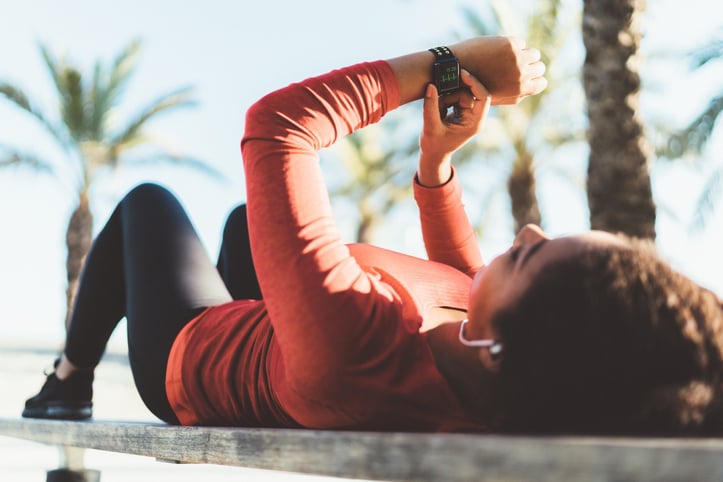When clients want to change their body composition, such as losing fat or gaining lean mass, how will you determine if they are meeting their goals? You can use a weight loss calculator, BMI calculator, skinfold measurements, and more. There are many assessment techniques, each with benefits and drawbacks depending on the client you are working with.
The tips in this blog will complement what you learned during your personal training certification training and can be applied for future reference with your clients.
Body composition can be assessed by a variety of methods, including skinfold measurements, bioelectric impedance, and hydrostatic weighing (the standard other body composition methods are compared against).
These methods estimate the relative percentage of body weight that is fat versus fat-free mass (muscles, bones, water, connective tissues, organs, etc.). There are also methods for assessing changes in girth, such as circumference measurements and waist-to-hip ratios. Knowing the benefits and potential drawbacks of these methods will help you chose the right tools to track your client’s progress.
Skinfold Measurements
Skinfold measurements are a more common method for assessing body composition in the fitness setting. This method requires the use of calipers to measure the amount of subcutaneous fat beneath the skin. There are many valid formulas and measurement sites used to calculate body fat percentage. NASM uses the simple four-site Durnin (or Durnin-Womersley) formula.
The four sites are the biceps, triceps, subscapular, and iliac crest. All measurements should be taken on the right side of the body and then added together and compared against a calculation table. Avoid taking measurements immediately after exercise. It is essential that trainers practice locating and measuring the four sites, poor skills will translate into inaccurate results. While the Durnin formula works well for most people, there are other formulas that are population-specific (1,2).
Assessing body fat using skinfold calipers can be a sensitive situation for some clients, especially overweight or obese clients. Take measurements in a low traffic area to respect their privacy. Additionally, the accuracy of skinfold measurements decreases with larger clients, and may not be the most appropriate method for assessing their body composition. Consider other methods such as bioelectric impedance, circumference measures, scale weight, or even how clothes fit to evaluate progress (1). Obese clients realize they are carrying too much fat- you don’t need to discourage them with a number indicating just how obese they might be.
Bioelectrical Impedance
Bioelectrical impedance is a reliable and simple to perform body composition assessment (3). Done with an instrument that conducts a painless electrical current through the body, it measures the amount of resistance encountered. This method is based on the hypothesis that tissues high in water content conduct electricity with less resistance than tissue with less water (like fat), thus results can be influenced by client hydration levels (4). Follow the instrument’s guidelines for best results. Both bioelectric impedance and skinfold measurements can have a +/- 3 – 4 % rate of error when estimating body fat (4).
Hydrostatic Weighing
Hydrostatic weighing, or underwater weighing, compares a person’s weight underwater to land weight. Based on Archimedes Principle, the premise is that the lean, fat-free mass is denser and will weigh more than fat when submerged in water. This method is usually done in an exercise physiology laboratory that has the assessment equipment, including a water filled tank. The process itself requires the client to wear a thin swimsuit, submerge themselves into the tank of water (usually a warm 95o F) while sitting in a chair suspended from a scale. Clients will then expel all of the air from their lungs, and then a weight is recorded and computed against land values (5). This process is not the most comfortable experience, even for fit athletes. Though the rate of error is very low, the process is not feasible for most clients or trainers to utilize. It can also be a very sensitive situation for overweight clients.
Circumference Measures
Circumference measures include both fat-free and fat mass, and so do not provide accurate estimates of fatness. But circumference measures can be good for tracking progress, assessing fat pattern distribution, can be used with obese clients, and the equipment (a flexible tape measure) is inexpensive. Taking circumference measurements does require attention to detail. When taking measurement, make sure the tape measure is taut and level around the areas being measured. Areas to measure include the neck, chest, waist, hips, thighs, calves and biceps (1).
Waist-to-Hip Ratio
The waist-to-hip ratio girth measure is another simple to perform assessment. Start by measuring the smallest part of a client’s waist (no drawing in the belly!), then the largest point at the hips. To determine the waist-to-hip ratio, divide the waist measurement by the hip measurement. A ratio greater than 0.8 for women and greater than 0.95 for men may put these individuals at risk for chronic diseases (1,6).
Knowing the methods and benefits of various body composition assessment techniques can make it easier to choose the best one for your client’s needs. Explain to your client what method(s) you have chosen and give them an overview of how it is done. (For detailed procedures and anatomical landmarks for measurements, refer to NASM’s Essentials of Personal Fitness Training.) You’ll also want to determine how often to reassess your client’s progress to their goals. As a final piece to share, when you talk about body composition and fat, remember that a pound of muscle weighs the same as a pound of fat - it’s the density that differs. A pound is a pound but density = mass / volume. A pound of fat takes up more volume since it is not as dense as a pound of muscle. Muscle does not weigh more than fat (at least not on land it doesn’t!).
References:
- Clark M. NASM Essentials of Personal Fitness Training, 4th ed. Baltimore, MD: Lippincott Williams & Wilkins; 2012.
- Durnin J., Womersley J. Body fat assessed from total body density and its estimation from skinfold thickness: measurements on 481 men and women aged from 16 to 72 years. Br J Nutrition. 1974;32: 77-97.
- Girandola N, Contarsy A. The validity of bioelectrical impedance to predict body composition. Bio Analogics 1988;2:78-84.
- Clark M., Lucett S. NASM Essentials of Sports Performance Training. Baltimore, MD: Lippincott Williams & Wilkins; 2010.
- McArdle, W., Katch, F., Katch, V. Exercise Physiology, 2nd ed. Philadelphia, PA: Lea & Febiger, 1985.
- American College of Sports Medicine. ACSM’s Guidelines for Exercise Testing and Prescription, 8th ed. Philadelphia, PA: Lippincott Williams & Wilkins, 2010.
















